Fiber Optics: Single Mode Fiber
Created on: Jun 17, 2019
What is Single Mode Fiber?
Single Mode Fiber, or Monomode is optical fiber that is designed for the transmission of a single ray (Mode) of light to carry information. Single Mode Fiber typically has a narrow core size, ranging from a diameter of 8 to 10μm which can effectively transmit information in wavelengths 1310nm and 1550nm. Since Single Mode Fiber has such a small core size and operates through individual pulses of light, the signal attenuation and transmission speeds triumph over Multimode Fiber. For this reason single mode fiber is the industry choice for transmitting data over long distance.
Types: OS1 and OS2
Single Mode Fiber can be categorized into OS1 and OS2. These are both effective solutions for Single Mode Fiber applications, however with most options there are clear advantages for different uses. OS1 is constructed with a tight buffer design and is designed for shorter distances with a 1.0dB/km attenuation limit. Since it's capabilities are lesser than OS2, naturally it is cheaper and therefor usually used in Indoor Data Center applications where OS1's short coming are not reached. OS2 has a Loose Tube construction, which can be useful in Outdoor applications such as direct burial and street fiber.
| Name | Standards | Cable Construction | Application | Maximum Attenuation | Distance | Price |
|---|---|---|---|---|---|---|
| OS1 | ITU-T G.652.A/B/C/D | Tight Buffered | Indoor | 1.0dB/km | 10 km | Low |
| OS2 | ITU-T G.652C/D | Loose Tube | Outdoor | 0.4dB/km | 200km | High |
Comparing Single Mode and Multimode:
Core Diameter
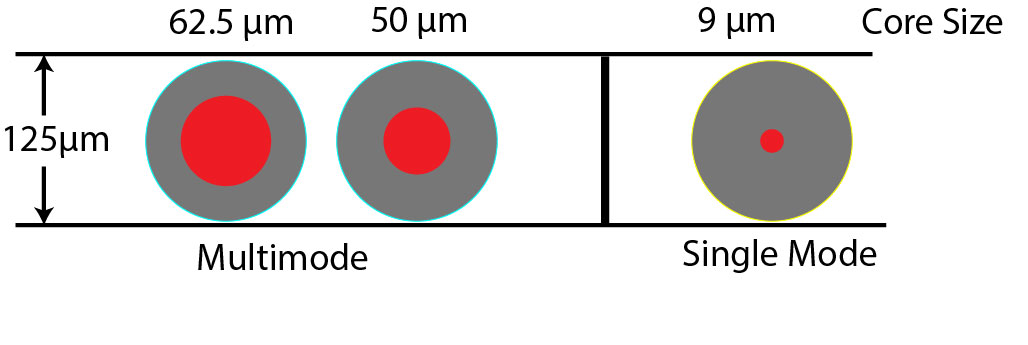 Single Mode and Multimode share similar "core & cladding" diameter, however each is very proportionally different. While Multimode requires a larger core to allow additional channels for different modes of light simultaneously traveling down the fiber, Single Mode does not. Displayed above is the drastic comparison between core to cladding in SM and MM (grey represents cladding material).
Single Mode and Multimode share similar "core & cladding" diameter, however each is very proportionally different. While Multimode requires a larger core to allow additional channels for different modes of light simultaneously traveling down the fiber, Single Mode does not. Displayed above is the drastic comparison between core to cladding in SM and MM (grey represents cladding material).
Light Source
Lasers and LED are the most common light sources in the industry for optical transmission. Early Multimode Fiber was optimized for LED light, which disperses light and allows for more modes of light, but has significantly less speed and distance capabilities. Due to these short comings, more recently released MMF (OM3, OM4 and OM5) all are optimized for Laser Light Transmission. All Single Mode Fiber is optimized for Laser Technology.
Modal Dispersion
Modal Dispersion is the biggest limiting factor of Multimode Fiber. The different light rays or "modes" interfere with each other when traveling down the fiber and create latency and decrease signal power. Due to Single Mode Fiber's small core size and the use of only one mode of light, Modal Dispersion is fractional compared to Multimode. Learn more about Limiting Factors of Fiber.
Bandwidth
As mentioned before, SMF has much higher bandwidth capabilities since it is a single mode of light vs. multiple. These different light rays can interfere with each other if not properly spaced.
Signal Attenuation
Since the core size is so much smaller in SMF than MMF, the light is reflected much less. This decreases the attenuation in Singlemode fiber in comparison to Multimode.
9/125 Single Mode Fiber Simplex
| Attenuation at 1310nm | 0.36dB/km | |
| 0.22dB/km |
50/125 OM3 Multimode Fiber
| 3.0dB/km | |
| 1.0dB/km |
Distance
Distance capabilities are greatly determined by quality of the fiber, and the transceiver being used. Generally Speaking, MMF can reach up to 2km and SMF has the capability of reaching distances up to 200km. We will discuss later how the transceiver being used usually determines the overall cost of the SMF system, as it is the majority of the overall cost.
Cable Color
In compliance with TIA-598C Standard, single mode fiber has a yellow jacket, and multimode is coated with either Orange (OM1/OM2), Aqua Blue (OM3 /OM4), or Green (OM5). It should also be noted MTP/MPO Multimode fiber patch cables are Magenta Color for convenience.
Price
When comparing prices, both the Fiber and the components/devices should be considered to provide a realistic overview comparison. Multimode Fiber is more expensive than single mode fiber, however the components involved are much more expensive for Single Mode fiber. Since SMF is designed more for longer distance applications, more precise equipment is required. This includes solid-state laser diodes, connectors with smaller tolerances. SMF has more expansion capabilities like Wavelength Division Multiplexing (WDM). This can drastically increase data transfer capabilities of SMF but has many expensive devices that are required.
Overall, when comparing pricing between SMF and MMF systems the speed will exponentially increase the cost of SMF vs. MMF. With this being said, SMF distance capabilities far surpass MMF. MMF solutions should be considered in short distance applications, where a limited budget is present.
Connectors
The fiber optic connector is pre-fabricated to the fiber cable and commonly terminates to either another fiber cable or to a transceiver. The most common types of fiber connectors are: LC, SC, FC and ST. Learn more about fiber optic connector types and the typical applications of each here: Fiber Optic Connectors.
Advantages
After reviewing this blog, many advantages begin to stand out when comparing Single Mode Fiber to Multimode Fiber.
These include:
- Less Signal Attenuation
- Less Dispersion and External Interference
- Faster Transmission Speeds
- Larger Bandwidth Spectrum
- Farther Distance Capabilities
- Does not have Modal Dispersion, Noise, etc.
Conclusion
Single Mode Fiber is the most effective way to transmit data over long distances and hence is the industry standard for "backbone systems". Many limiting factors of Multimode Fiber including Modal Dispersion and Modal Noise do not affect the Single Mode light transfer. By installing SMF now, you will "future-proof" your data systems and save money in the long run. Single Mode Fiber Patch cables are a cost effective and reliable method for your data center connection needs.

Author:
Brian Sackett
Marketing & Development
Related Products
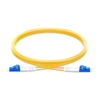
Single Mode Fiber Patch Cables
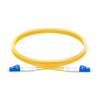
OS2 LC-LC UPC Duplex Singlemode Fiber Optic Patch Cables - Yellow
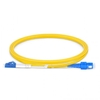
OS2 LC-SC UPC Duplex Singlemode Fiber Optic Patch Cables - Yellow
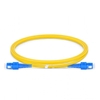
OS2 SC-SC Duplex Singlemode Fiber Optic Patch Cables - Yellow

